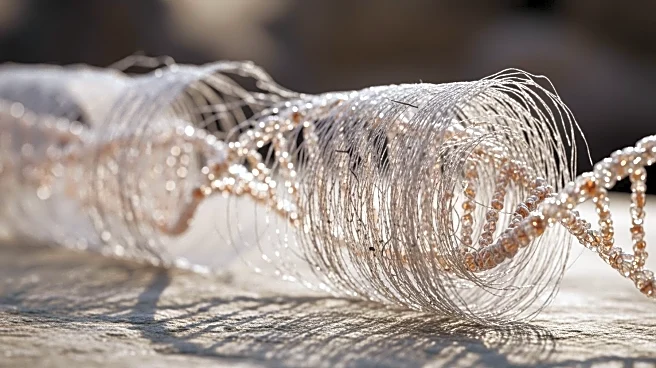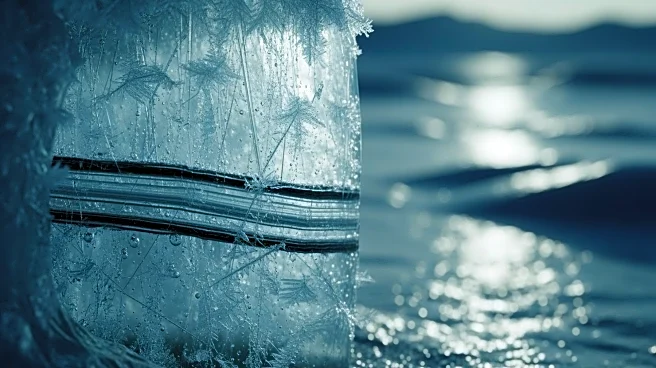What's Happening?
Scientists have successfully extracted viable RNA from the remains of a woolly mammoth found in Siberia, marking a significant scientific breakthrough. The mammoth, which died approximately 40,000 years
ago, was preserved in permafrost, allowing researchers to obtain RNA samples. This achievement challenges the previous understanding that RNA degrades rapidly after death, making it difficult to extract useful samples. The study, published in the journal Cell, involved a team from Stockholm University, who managed to extract RNA from the juvenile mammoth, named Yuka, and identified new types of microRNA. These findings provide insights into the processes occurring within cells at the time of the mammoth's death, effectively frozen in time for millennia.
Why It's Important?
The extraction of RNA from ancient remains opens new avenues for understanding the history and evolution of RNA viruses, including those affecting humans today, such as SARS-CoV-2 and Ebola. This breakthrough could lead to advancements in virology and molecular biology, offering potential insights into the genetic makeup and adaptation of ancient species. The ability to study RNA from long-extinct organisms may also enhance our understanding of evolutionary processes and the environmental conditions that influenced them. This research underscores the importance of permafrost as a natural preservation medium, providing a unique opportunity to study ancient biological materials.
What's Next?
Future research may focus on applying this RNA extraction technique to other well-preserved ancient remains, potentially uncovering more about extinct species and their interactions with the environment. Scientists may also explore the implications of these findings for modern-day RNA viruses, seeking to understand their origins and evolutionary pathways. The study's success could inspire further interdisciplinary collaborations, combining paleontology, molecular biology, and virology to deepen our understanding of ancient life and its relevance to contemporary scientific challenges.
Beyond the Headlines
This discovery highlights ethical considerations regarding the study of ancient remains, including the potential for genetic manipulation and the responsibilities of preserving natural heritage. The research also raises questions about the impact of climate change on permafrost and the preservation of ancient biological materials, emphasizing the need for sustainable environmental practices.











